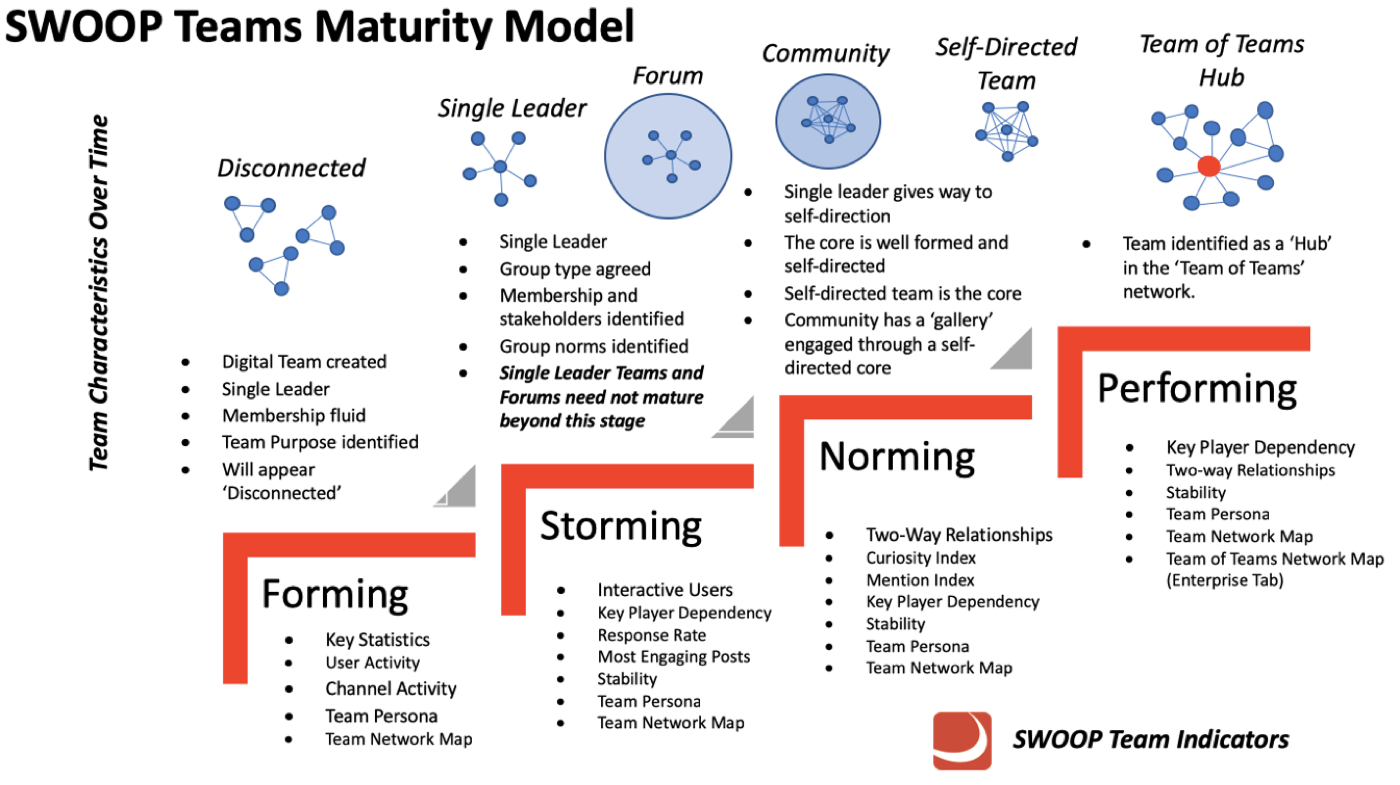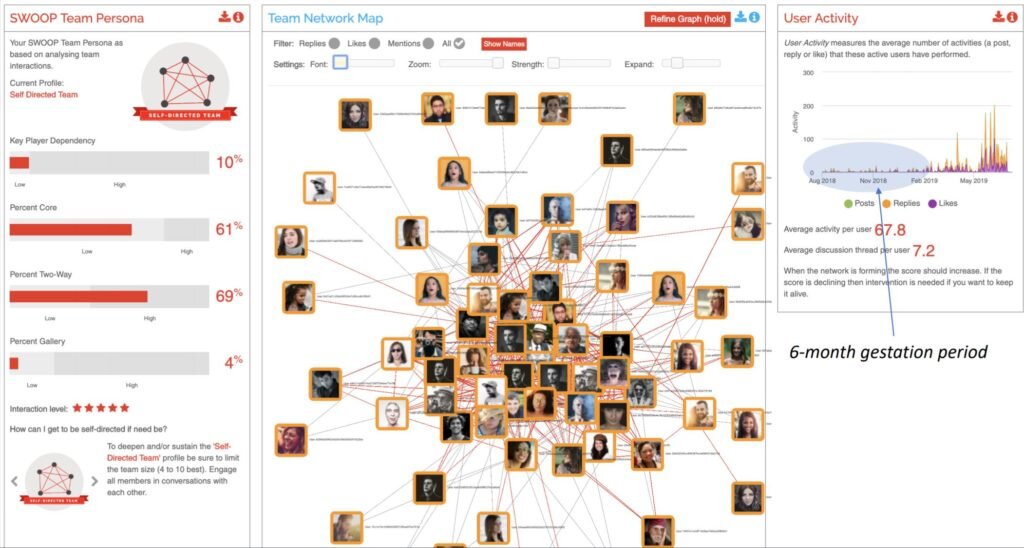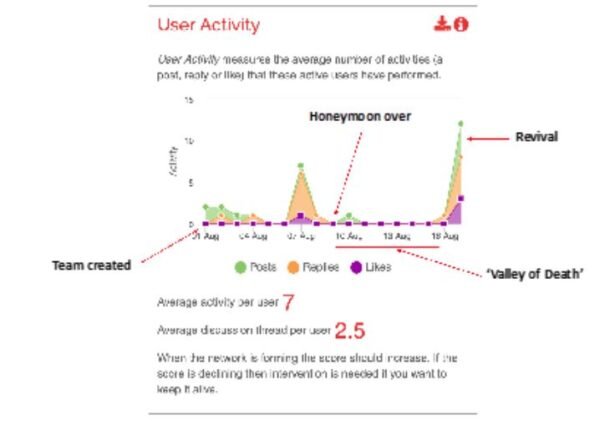Accelerating Microsoft Teams Adoption with SWOOP
We have observed two different approaches to the adoption of Microsoft Teams; one is to just turn it on and let organic growth happen; the second is the more considered phased rollout, typically adopted for most large-scale enterprise-wide software implementations.
While we might scoff at the first approach as being somewhat reckless, for young organisations staffed by young digital networking natives, it can certainly work. However, for the most part we observe a honeymoon period where after the initial excitement has died, so do many of the teams that were quickly formed, then left lying dormant.
Forming, Storming, Norming and Performing
At SWOOP we have adopted this popular frame for describing a team’s growth journey. With the benefit of hindsight we have been able to undertake retrospective analyses of the actual growth journey successful teams have undertaken. It would be fair to say that at the early ‘Forming’ stage the trajectories were often far from smooth. In fact, in some instances the teams we able to narrowly avoid ‘near death’ experiences.
For example, below we see a case of what SWOOP now identifies as a vibrant self-directed team of close to 70 members, who have virtually all been active over the 10 month life of the team to date. However, if we look at the activity pattern over time there was a nearly six month gestation period before the team then really took off to its current state, over a matter of months.
In reality, many teams do not make it past the very early formation stages. If we take a more forensic look at the earliest stages of this team’s formation, we can see the early honeymoon period, where a handful of motivated staff launched the team.
This was inevitably followed by the ‘valley of death’ where many teams cease to operate. Perhaps they were ill-conceived to start with? Then for those that survive this stage, it is often through the recruitment of new discussion leaders, who will often displace the team initiators, as the informal team leads. While it was still many more months before the team really took off, it was able to achieve the critical mass needed to keep going.
Just imagine how fast your teams’ adoption would be if your teams did not experience a ‘valley of death’ and a team’s gestation period could be reduced to weeks instead of months?
Benchmarking Your Team’s Growth Journey
The above examples have been taken from early adopters of MS Teams, where in reality, the product was also going through its own growth journey. Some early adopters had purposefully stopped using the product, awaiting for more stability or future functions to become available before using the platform in earnest. That said, overall there is a clear indication that a little pre-work before launching into Teams can play dividends in accelerating the growth journey.
At our recent SWOOP Chat event in Sydney, Australia, during a session addressing Microsoft Teams adoption, Professor Kai Reimer from the University of Sydney’s Digital Disruption Research Group highlighted the potential negative impacts of too much choice for ways to conduct a simple task like co-developing a document. You can watch the presentation here.
Alister Webb, author of the handbook on Designing Collaboration, reinforced the value of taking time to think through the required engagement processes, prior to launching a new team. Collectively though, the feeling was that some level of learning through experimentation might be required to cater for the vast variety of contexts that Microsoft Teams is servicing.
Increasingly, the different contexts are being codified in the form of usage scenarios. These scenarios provide the potential to benchmark you own team with like teams in your own organisation, and eventually across other organisations. For example, the common scenario of a project team’s growth journey should be comparable with other project teams across your organisation, with speed to get the ‘Performing’ stage being the common goal.
Using SWOOP to Accelerate your Team’s Growth Journey
SWOOP uniquely provides operational analytics in close to real time. This high frequency feedback can afford team leaders with early insights into potential growth journey barriers.
In our next blog article we identify how, at an Enterprise level, specific SWOOP widgets can be used to monitor teams’ growth journey and accelerate the whole of enterprise adoption of the ‘Teaming’ environment. This will be followed by more specific SWOOP usage practices aligned to specific usage scenarios.
Learn more about SWOOP for Teams.




